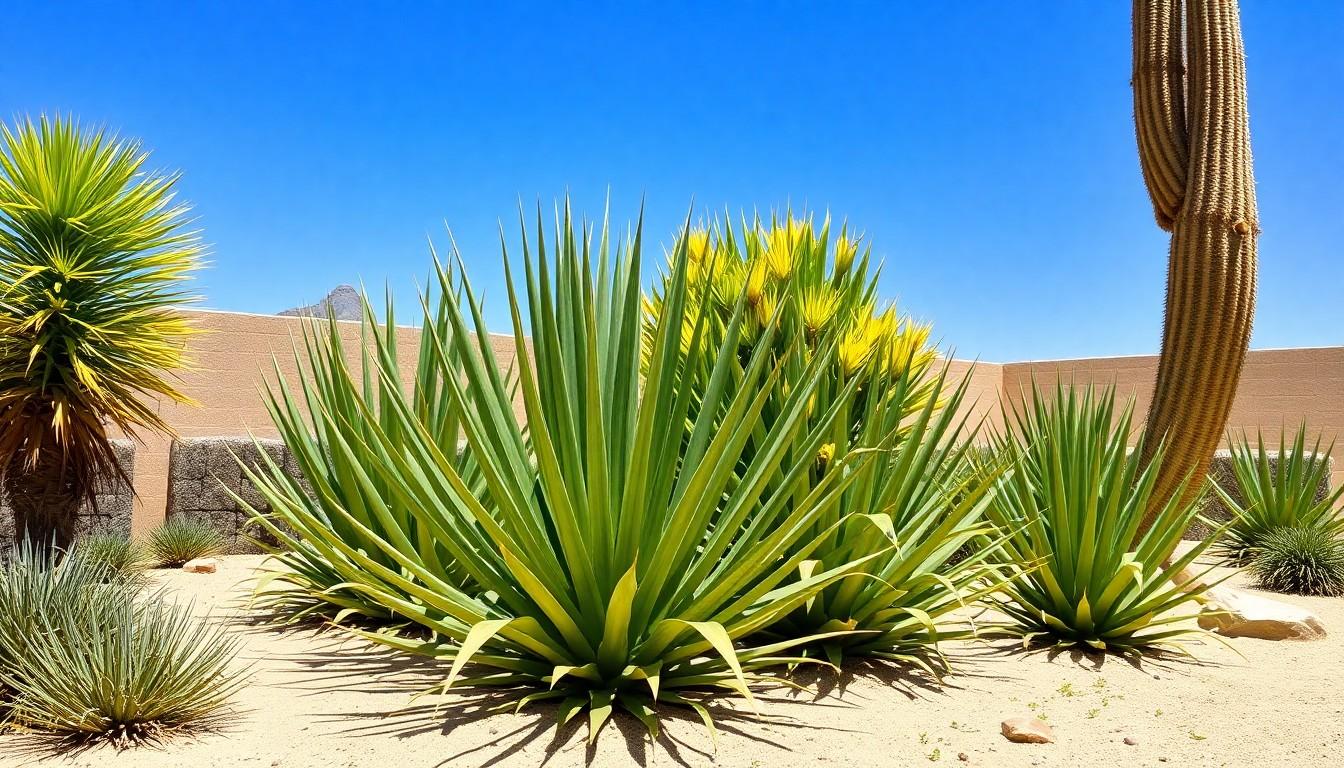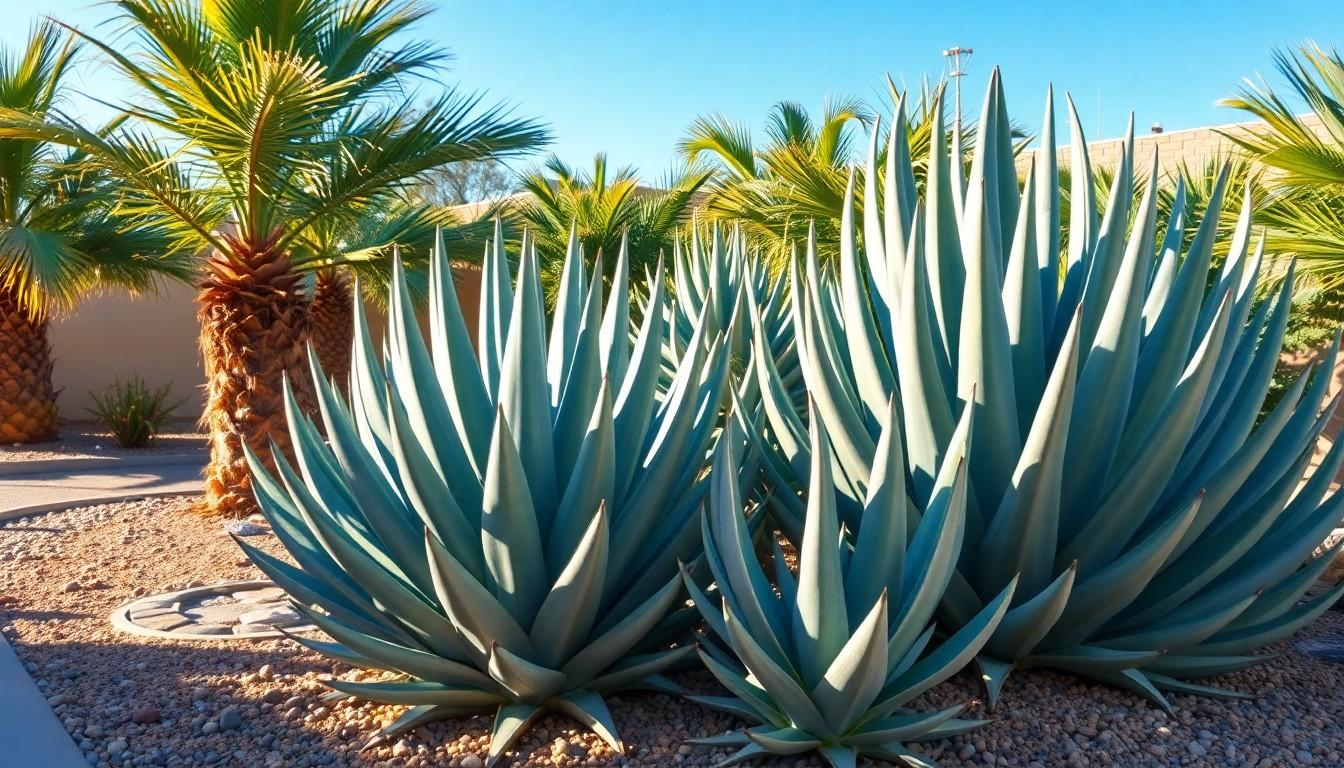If you’re looking to add a touch of the tropics to your outdoor space, the yucca plant might just be your new best friend. With its striking sword-like leaves and ability to thrive in various conditions, this resilient beauty is like the superhero of the plant world. But don’t let its tough exterior fool you; it still needs a little TLC to flourish in your garden.
Caring for a yucca plant outdoors isn’t rocket science, but it does come with its quirks. From sunbathing in the right spot to mastering the art of watering (or not watering), there’s a bit of finesse involved. So grab your gardening gloves and let’s dive into the secrets of yucca plant care that’ll have your neighbors green with envy.
Understanding Yucca Plants
Yucca plants are known for their unique architectural forms and ability to thrive in various outdoor environments. These resilient plants enhance landscape aesthetics while requiring minimal maintenance.
Types of Yucca Plants
Numerous yucca plant species exist, each offering distinctive traits. Common varieties include Yucca filamentosa, characterized by its narrow leaves and stunning bloom spikes. Yucca gloriosa features broader leaves and exhibits a tall flower stalk, providing spectacular yellow-white flowers. For those seeking an eye-catching choice, Yucca aloifolia boasts sharp leaf tips and a striking appearance that stands out in any garden. Exploring these types helps gardeners select the most fitting option for their landscape design.
Benefits of Growing Yucca Outdoors
Having yucca in the garden offers multiple advantages. Drought resistance makes these plants ideal for areas with limited rainfall. With an ability to endure heat, yucca thrives in sunny environments, creating a vibrant look. They also attract pollinators like bees and butterflies, promoting biodiversity. Furthermore, low maintenance needs save time for gardeners, allowing enjoyment of the garden without constant upkeep. Thus, yucca plants combine aesthetic appeal with practicality in outdoor spaces.
Essential Yucca Plant Care Outdoors

Caring for yucca plants outdoors ensures they thrive and enhance the landscape. Understanding their specific needs plays a vital role in successful cultivation.
Sunshine Requirements
Yucca plants prefer full sun, thriving in locations that receive at least six hours of direct sunlight daily. Exposure to sunlight promotes healthy growth and vibrant foliage. Some varieties, like Yucca filamentosa, tolerate partial shade but perform best in bright conditions. Insufficient sunlight may lead to leggy growth and reduced flowering. Placing yuccas in sunny spots encourages strong stems and lush leaves.
Watering Guidelines
Watering practices significantly impact yucca plant health. These plants are drought-resistant and prefer dry soil between watering sessions. During the growing season, providing water every two to three weeks suffices, while reducing frequency in the fall. Overwatering can lead to root rot, a common issue for yuccas. It’s crucial to monitor soil moisture and adjust watering based on rainfall and temperature. Ideal watering consists of soaking the soil, allowing it to dry out before the next session.
Soil Preferences
Soil choice influences overall yucca well-being. Well-draining soil is essential to prevent water accumulation around roots. Sandy or gravelly soils work best, offering both drainage and aeration. While yuccas tolerate poor soil conditions, amending soil with organic matter promotes healthy root development. pH levels between 6.0 and 8.0 suit yuccas ideally. Conducting a soil test can reveal necessary amendments to support robust growth.
Common Pests and Diseases
Yucca plants face several pests and diseases that can affect their health. Identifying these issues early ensures effective management.
Identifying Pests
Common pests include spider mites, aphids, and mealybugs. Spider mites create fine webs and cause yellowing leaves. Aphids sap sap from plants, leading to stunted growth. Mealybugs appear as small white cottony masses on stems and leaves. Checking for sticky residue on leaves often indicates a pest problem. Regular inspections help catch these infestations early, allowing for prompt action.
Treatment Options
Treatment options vary based on the identified pest. Insecticidal soap effectively removes aphids and mealybugs. Diluting neem oil in water proves useful against spider mites. Spraying these treatments weekly can significantly reduce pest populations. Introducing natural predators, like ladybugs, decreases pest numbers without chemicals. Establishing a healthy yucca through proper care proves effective in preventing infestations in the first place. Regularly cleaning fallen debris around the plant further minimizes disease risk.
Seasonal Care Tips
Caring for yucca plants throughout the seasons ensures vibrant growth and resilience. Each season brings unique care requirements.
Spring Care Routine
During spring, focus on new growth and watering practices. Begin by inspecting the plant for any winter damage, removing any dead or damaged leaves. Fertilizing with a balanced, slow-release fertilizer promotes healthy development. Watering should occur every two to three weeks, adjusting frequency based on rainfall. Encouraging proper sunlight exposure is crucial; ensure the yucca gets at least six hours of direct sunlight each day.
Winter Preparations
Preparing yucca plants for winter involves several key steps. Protecting the plant from frost is essential, especially in colder regions. Applying a layer of mulch around the base helps insulate the roots. Reducing watering frequency is important, as yuccas prefer drier conditions during dormancy. Observing the local climate allows for adjustments; if temperatures drop significantly, consider covering the plant. Monitoring for pests during this time also aids in maintaining plant health.
Conclusion
Caring for yucca plants outdoors can transform any garden into a tropical oasis. With their striking forms and low maintenance needs, they’re perfect for gardeners seeking beauty without excessive effort. By ensuring they receive adequate sunlight and proper watering, these resilient plants will thrive and enhance landscape aesthetics.
Regular inspections for pests and seasonal care adjustments will keep yuccas healthy year-round. By following these guidelines, anyone can enjoy the unique charm of yucca plants while creating an inviting outdoor space that impresses everyone. Embrace the beauty and resilience of yuccas, and watch them flourish in your garden.

